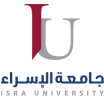
الصفحة الرئيسية | رسائل الماجستير

| السنة | 2023-02-05 |
|---|---|
| التخصص | ماجستير العلوم الصيدلانية |
| العنوان | The Impact of Cellular Levels of Havy Metals on Woman Healt in Jordan |
| اسم المشرف الرئيسي | اسراء عمر عدنـان الطيبه | Esra' Taybeh |
| اسم المشرف المشارك | احمد اجود جدوع التلهوني | |
| اسم الطالب | حلا موسى اصبيح | Hala Mousa Ahmad Isbieh |
| Abstract | Background: Several sources of heavy metal exposure exist in our daily routines, but long-term exposure can interfere with the physiological functions of many human body systems. Aim: this study aims to visualize the impact of chronic exposure to different heavy metals sources on the general immunity and reproductive health of females of childbearing age. Method: A quantitative study was conducted between 01 March and 31 August 2022 through a cross-sectional survey through a patient interview to evaluate the immunity functions, reproductive health, and medical history for women in childbearing age in Jordan. The questionnaire asked the participants about their medical history and demographic characteristics and scanned for their lifestyle habits that may contribute to heavy metals poisoning, as well evaluated the general immunity status by administering the valid Immune Status Questionnaire (ISQ), by indicating how often participants have had the complaints in the last year, also we evaluated the reproductive health of all participants by asking about the nature of their menstruation, whether it is regular or not, if they experienced delayed puberty, and, for married and divorced participants, if they experienced trouble conceiving, In Vitro Fertilization (IVF) treatment needs, miscarriage, or preterm delivery. In addition, testing their cellular heavy metals via spectrophotometry was performed, the ideal zone for heavy metals to be less or equal 33%, if the levels are between 33% and 66%, this is considered as a moderate heavy metal's toxicity, and if above 66% this indicates severe toxicity. This study sought to gather data from participants women at only one point in time to measure the association between toxic metal exposure and health. Results: In our study, the highest heavy metal cellular percentage was for aluminium (Mean = 58%). The majority of participants (85%) used deodorant and cosmetics in their daily routine. Only 28% of them consume antacid medications for heartburn. The use of deodorant and cosmetics are significantly associated with aluminium (p = .045), and nickel (p <0.01). The frequent administer of antacid medications is associated with aluminium (p=.009). Eating seafood in a regular basis is significantly associated with mercury (p = .020). Passive smoking is significantly associated with beryllium (p=.017), and bismuth (p = .003). As well the autoimmune diseases are significantly associated with antimony (p = .013), beryllium (p = .008). The final ISQ score and the current immunity scoring are significantly associated with beryllium (p = .044 and p = .029, respectively). Furthermore, the preterm delivery is significantly associated with barium (p = .034), and beryllium (p = .019). PCOS is also significantly associated with beryllium (p = .008), bismuth (p = .035), and mercury (p = .040). Trouble Conceiving and irregularity in period/ menstruation are significantly associated with beryllium (p = .030, p = .035, respectively). Conclusion: The sources of heavy metal exposure are widespread in the daily life routines, and the majority accumulate heavy metals in their bodies at some level, sometimes over a period of time. As a result of chronic exposure to heavy metals from various sources, such as aluminium-containing deodorants, the human body will suffer from disruptions in immunity and different physiological functions. The present study provided evidence of the association between high cellular heavy metal levels and exposure sources, immunity, and fertility in females of childbearing age who live in Amman, Jordan. |
| الأبحاث المستلة |